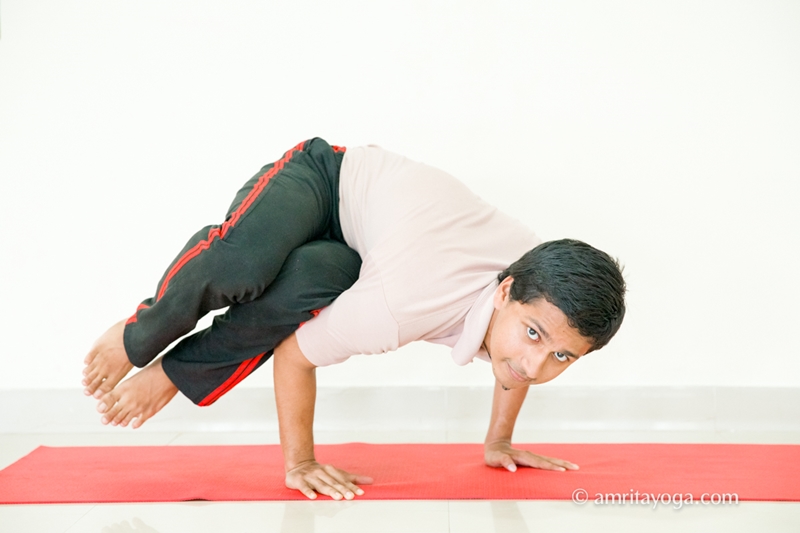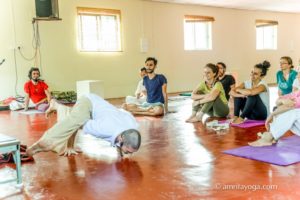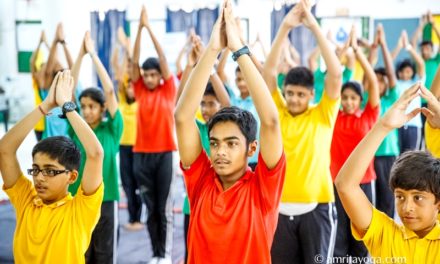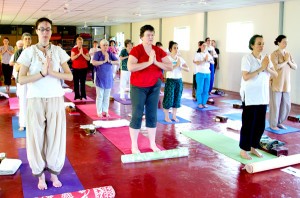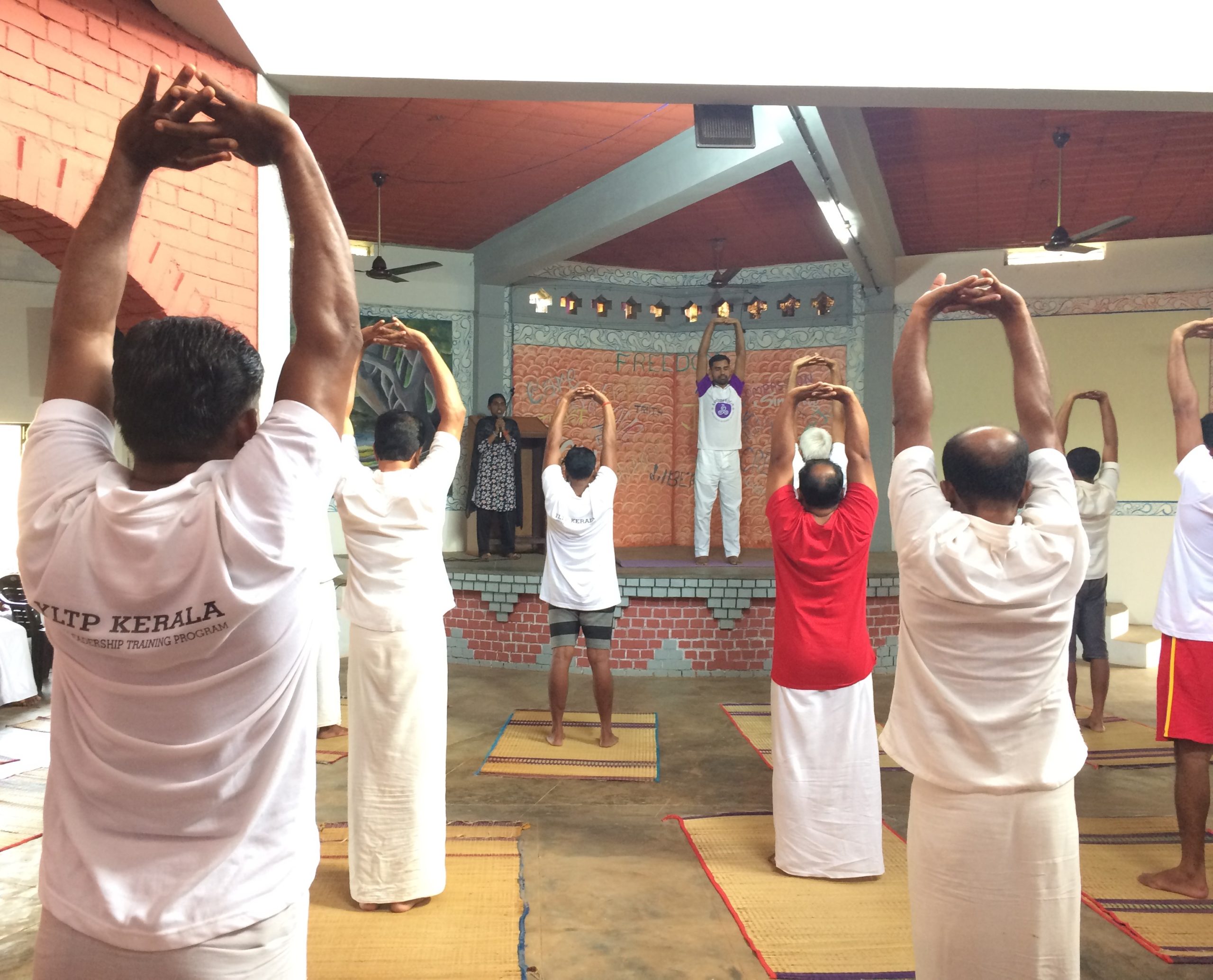 Genuine Yogasana Practice
Genuine Yogasana Practice
What distinguishes yogasana practice from mere exercising or acrobatic contortions? Some practitioners are under the impression that the modifications of postures they practice are thousands of years old. Thus, by practicing those movements, they are following the ancient path of yoga with its mystical, long-traced history.
The classical text Hatha Yoga Pradipika, which is only around six hundred years old, has only 84 asanas. However, other texts refer to many postures that existed longer. 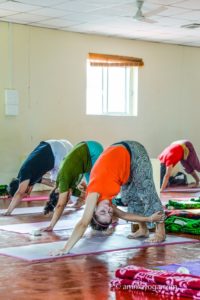 Some scholars believe that when Sage Patanjali was writing about asana in the Yoga Sutras more than two thousand years ago, he was referring to a seated meditation posture and not any other asanas that we practice today.
Some scholars believe that when Sage Patanjali was writing about asana in the Yoga Sutras more than two thousand years ago, he was referring to a seated meditation posture and not any other asanas that we practice today.
The age of the asanas don’t really matter in this context of practicing the ancient path of yoga. Whether the asanas are ancient or not, to make it real yoga, it is more relevant how we practice them. So the question is: How should we practice these ‘modern’ asanas to honor the ancient teaching of yoga scriptures and yoga philosophy?
The Limbs of Ashtanga Yoga
The way is to look into the classical text on yoga philosophy, the Yoga Sutras, and see in which context the practice of asana is mentioned there. In his text, Sage Patanjali outlines the path of Ashtanga Yoga, the eight limbs of yoga.
The first limb is called “Yama”, or moral regulations. The second limb is called “Niyama”, or inner observances. The third limb is “Asana”. This means that practicing asana without a strong foundation in ethics and inner observances will not take us to the heights of an evolved yoga practice.
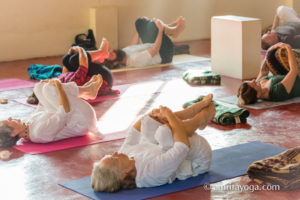 According to the Sutras, this path culminates in Samadhi, a state of full absorption where one perceives oneself in the true light of the Higher Self.
According to the Sutras, this path culminates in Samadhi, a state of full absorption where one perceives oneself in the true light of the Higher Self.
Not only do Yama and Niyama serve as a foundation for asana practice, but these guidelines can also be directly applied to our daily asana practice. The three sutras about asana (2.27, 2.28 and 2.49) do not say anything directly about weaving the principles of Yama and Niyama into the asana practice. Still, it is helpful to incorporate the universal and timeless ethics of the Yama and Niyama into the practice of asanas.
 Take for example, Ahimsa (non-violence). Many times, students injure themselves because they have neglected this principle. How often do we push into the asana, violating our own boundaries? You can even hear some students practicing yogasana in such an aggressive manner that their breathing becomes jerky and obviously unhealthy.
Take for example, Ahimsa (non-violence). Many times, students injure themselves because they have neglected this principle. How often do we push into the asana, violating our own boundaries? You can even hear some students practicing yogasana in such an aggressive manner that their breathing becomes jerky and obviously unhealthy.
Similarly, Yama and Niyama can guide our practice towards a more integrated experience. For instance, what is the point of practicing yogasana without the second Niyama, contentment? Not only should asana practice lead to contentment, but also we should consciously develop the attitude of contentment while we are performing the yogasana.
This mental attitude brings us peace with how things are at this present moment, even if the body feels stiff and we experience discomfort in certain areas. Relating to the Yama and the Niyama in such a manner during your practice is very powerful.
Yoga Blossoms In Our Everyday Lives
Through an asana or in an asana, whatever good qualities we gain, will leave a positive imprint in our life and accompany us in our daily activities. When we closely link the breath in the body with each movement, we are operating on an expanded level of awareness and everything sinks in deeper.
In the depth of these experiences the Yama and Niyama grow stronger. When these helpful ethical guidelines mature, they serve as a strong foundation not only for a seated meditation, but also for our spiritual life in general. Thus we securely climb the heights of an ever-blissful Yogic Lifestyle.
Five Yamas
- Ahimsa: Non-violence
- Satya: Truthfulness
- Asteya: Non-stealing
- Brahmacharya: Leading a life towards Brahman, the highest reality
- Aparigraha: Non-hoarding
Five Niyamas
- Saucha: Purity of body and mind
- Santosha: Contentment
- Tapas: Spiritual effort; austerity
- Svadhyaya: Study of the Self and self-study
- Ishvara pranidhana: Surrender to God
Next time you’re on your mat, why not take up one of the Yamas or Niyamas and focus on it?
Author: Dayalu Alwin D’Angelo
As always, thoughtful comments are invited and appreciated. Share your reflections with us! See below to leave a comment.

